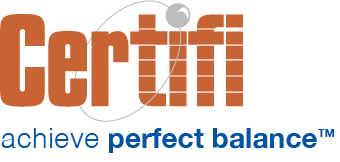Most benefits administrators’ first foray into building technology involved enrollment and eligibility platforms. As they gained market share, their customers began to ask them for consolidated billing or direct billing solutions. At which point they faced a question: Should they build their own billing platform or enter into a benefits administration billing partnership by buying and white labeling a solution?
We’ve presented our premium billing and payments solution to numerous benefits administrators at various stages of their billing and payment journey. Some come to us after they’ve spent years — and potentially millions — trying to piece together their own solution. Others have determined that building a solution isn’t their core competency. Instead, they look for a benefits administration billing partnership to help them achieve their billing aims.
When we present our premium billing solution to benefits administrators, there are common questions they ask. To help those shopping for a billing solution, below are those questions and what type of answer to expect.
What makes you unique?
If you’re shopping for a billing partner, you want one that offers market-leading features and functionality. The best way to ascertain is to simply ask what makes them unique. Most vendors understand the market better than you will and should be able to articulate what makes their solution unique.
For example, at Certifi, we designed our system based on lessons learned from nearly 3 decades of experience building billing applications. The result is an accounting-style solution that pairs debits and credits that we call Perfect Balance™. As a result of our unique system design, we eliminate most manual reconciliation while improving billing accuracy.
How robust is your API?
If you’ve decided to white label a billing provider’s solution, you may want to pull some of their data into your user portal or another application. Many of our customers want to see things like balances or payment dates, so they can display basic billing information in their solution. To do that efficiently, you’ll want the potential billing partner to have an API that simplifies the retrieval of data.
So ask for API documentation. Also, you may find the API doesn’t include the endpoints or data you need. If so, ask if and how the potential partner can add new API endpoints. The more robust their API, the more creative can get in integrating the partner’s data into your platform. Plus, the better the API, the more likely it is that the billing partner has similar clients. It’s not their first rodeo.
What branding options exist?
If you choose to white label a solution, you need to make sure that everything can be branded. That includes your brand or your customer’s brand. That means things like invoices, payment portals or delinquency notifications should be able to include at a minimum the required logo. But it’s also important that other style elements can be configured. For example, our payment portal can receive CSS styling elements. That means fonts, colors, etc. can meet your or your customer’s branding guidelines.
What are your SSO capabilities?
For a seamless user experience, you’ll want a partner that enables single sign-on (SSO) capabilities. That could include SSO functionality to access a payment portal for users to pay an invoice. In this scenario, one of your customers or their employee would log into your online application, click a link to pay a bill, and be taken directly into a payment portal to make that payment without supplying login credentials.
Another use case involves enabling your team to SSO from your administrative application to your billing partner’s billing application. That enables your team to perform administrative billing tasks without having to sign in to your partner’s application.
How do you handle miscellaneous fees?
Companies design billing systems to ingest enrollment information and insurance premium data to generate invoices. But what happens if other non-premium items need to appear on an invoice?
We recently had a prospect that needed to bill multiple locations miscellaneous fees like a monthly tithe, rent, and IT service charges, among other items, in addition to insurance premiums for that location’s employees. Your billing provider should be able to handle incorporating those miscellaneous charges into group bills. For example, we offer a way to import or create those miscellaneous charges so they appear on group or individual bills.
Certifi’s William is automated premium billing and payment software that streamlines benefits billing and payment solutions for employers and benefits administrators.



